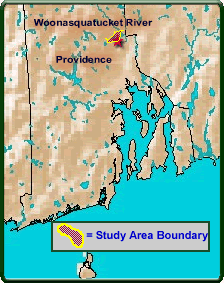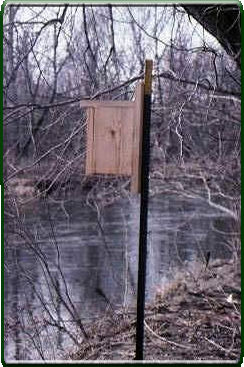Upper Midwest Environmental Sciences Center
|
|
| Home/ Overview/ Science Programs/ Data Library/ Products and Publications/States/ Rivers/Teachers and Students/ Links/ Contact/ Search |
The Centredale Manor and Brook Village properties on the Woonasquatucket River near Providence, Rhode Island, are highly contaminated with dioxins. Scientists do not know the source of the contaminants, but their presence is likely because of the largely unregulated use, storage, and disposal of hazardous substances on the property from 1921 until 1977.

 The U.S. Environmental Protection
Agency is doing an ecological risk assessment at this site and
requires data to define these risks. Tree swallows can be used as
an avian receptor to determine whether birds are being exposed to
and accumulating possible harmful levels of dioxins, furans, and
other organochlorines.
The U.S. Environmental Protection
Agency is doing an ecological risk assessment at this site and
requires data to define these risks. Tree swallows can be used as
an avian receptor to determine whether birds are being exposed to
and accumulating possible harmful levels of dioxins, furans, and
other organochlorines.
Tree swallows are an ideal study species because they have a broad geographic distribution, will readily use nest boxes, feed on emergent aquatic insects near the nest site, and are amenable to handling.
Approximately 60 swallow boxes, 30 at each of two sites, will be attached to posts or other suitable structures along the riverbanks. We will visit each nest box approximately once a week until the young reach 12 days of age.
We will check and quantify the presence of eggs or young in the nest box. We will also analyze tissue samples for chemical contamination and calculate the risks.
This project was terminated in September 2001.
Principal Investigator: Christine Custer